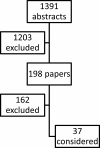Management of hemodynamically unstable pelvic trauma: results of the first Italian consensus conference (cooperative guidelines of the Italian Society of Surgery, the Italian Association of Hospital Surgeons, the Multi-specialist Italian Society of Young Surgeons, the Italian Society of Emergency Surgery and Trauma, the Italian Society of Anesthesia, Analgesia, Resuscitation and Intensive Care, the Italian Society of Orthopaedics and Traumatology, the Italian Society of Emergency Medicine, the Italian Society of Medical Radiology -Section of Vascular and Interventional Radiology- and the World Society of Emergency Surgery)
- PMID: 24606950
- PMCID: PMC3975341
- DOI: 10.1186/1749-7922-9-18
Management of hemodynamically unstable pelvic trauma: results of the first Italian consensus conference (cooperative guidelines of the Italian Society of Surgery, the Italian Association of Hospital Surgeons, the Multi-specialist Italian Society of Young Surgeons, the Italian Society of Emergency Surgery and Trauma, the Italian Society of Anesthesia, Analgesia, Resuscitation and Intensive Care, the Italian Society of Orthopaedics and Traumatology, the Italian Society of Emergency Medicine, the Italian Society of Medical Radiology -Section of Vascular and Interventional Radiology- and the World Society of Emergency Surgery)
Abstract
Hemodynamically Unstable Pelvic Trauma is a major problem in blunt traumatic injury. No cosensus has been reached in literature on the optimal treatment of this condition. We present the results of the First Italian Consensus Conference on Pelvic Trauma which took place in Bergamo on April 13 2013. An extensive review of the literature has been undertaken by the Organizing Committee (OC) and forwarded to the Scientific Committee (SC) and the Panel (JP). Members of them were appointed by surgery, critical care, radiology, emergency medicine and orthopedics Italian and International societies: the Italian Society of Surgery, the Italian Association of Hospital Surgeons, the Multi-specialist Italian Society of Young Surgeons, the Italian Society of Emergency Surgery and Trauma, the Italian Society of Anesthesia, Analgesia, Resuscitation and Intensive Care, the Italian Society of Orthopaedics and Traumatology, the Italian Society of Emergency Medicine, the Italian Society of Medical Radiology, Section of Vascular and Interventional Radiology and the World Society of Emergency Surgery. From November 2012 to January 2013 the SC undertook the critical revision and prepared the presentation to the audience and the Panel on the day of the Conference. Then 3 recommendations were presented according to the 3 submitted questions. The Panel voted the recommendations after discussion and amendments with the audience. Later on a email debate took place until December 2013 to reach a unanimous consent. We present results on the 3 following questions: which hemodynamically unstable patient needs an extraperitoneal pelvic packing? Which hemodynamically unstable patient needs an external fixation? Which hemodynamically unstable patient needs emergent angiography? No longer angiography is considered the first therapeutic maneuver in such a patient. Preperitoneal pelvic packing and external fixation, preceded by pelvic binder have a pivotal role in the management of these patients.Hemodynamically Unstable Pelvic Trauma is a frequent death cause among people who sustain blunt trauma. We present the results of the First Italian Consensus Conference.
Figures
References
-
- Papakostidis C, Giannoudis PV. Pelvic ring injuries with haemodynamic instability: efficacy of pelvic packing, a systematic review. Injury. 2009;40(Suppl 4):S53–S61. - PubMed
LinkOut - more resources
Full Text Sources
Other Literature Sources
Miscellaneous



